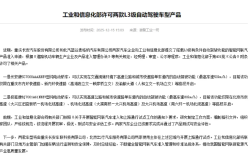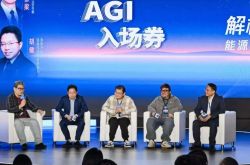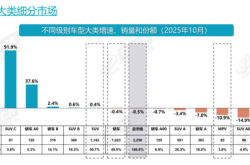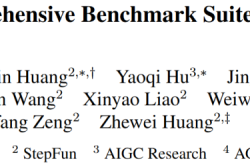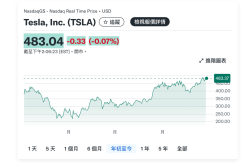The Second Half of the Large Model Era: Tencent's "Three Aces"
![]() 08/21 2025
08/21 2025
![]() 567
567
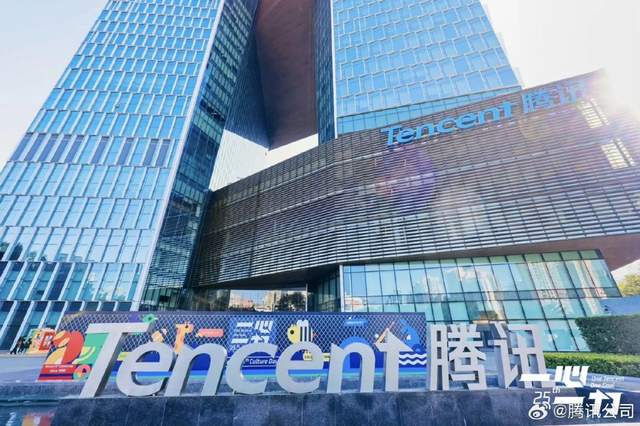
Among today's global technology companies, few evoke such complex and polarized market sentiments as Tencent. Its robust financial performance and vast user base have established it as a "pension stock" in the capital market. In the second quarter of 2025, Tencent delivered an outstanding performance with revenue growing 15% year-on-year, and its share price reached a four-year high.
However, debates about its innovation capabilities, growth potential, and responsiveness to emerging technological waves never cease. Often, questions arise about whether Tencent is "lagging behind" or reacting too slowly in this wave of artificial intelligence.
As the large model era enters its second half, the latest capabilities of large models that amazed users seem to have plateaued, while their application in various scenarios is on the cusp of an explosion. This raises critical questions: Is the market still evaluating Tencent with a traditional internet company perspective? In this technological revolution, is Tencent's true value, particularly its future potential deeply rooted in AI, being seriously underestimated?
① The Second Half of the Large Model War: A Competition of Capital and Computing Power
Since its inception, artificial intelligence, especially large language models, has been shrouded in a halo of "technological equality." It seemed any talented team could challenge industry giants with ingenious algorithms or applications. However, as time passes, a cruel reality becomes increasingly clear: the large model war has entered a resource-intensive second half, with high barriers excluding most players.
First, there is the "accelerated depreciation" of hardware.
AI computing heavily relies on high-performance chips, primarily GPUs. To maintain a performance edge, NVIDIA has shortened its flagship GPU architecture upgrade cycle from two years to one. This means top-tier equipment purchased today at great expense may become suboptimal choices next year. These expensive hardware devices are inherently "consumables." An Alphabet generative AI architect has pointed out that when data center GPUs operate at a high utilization rate of 60%-70%, their theoretical lifespan is only 1-3 years, and in extreme cases, even less than a year.
The physics behind this is straightforward. Compare a high-performance GPU to a racing car engine. When operating at full speed, its ultra-high power consumption of over 700W generates tremendous heat. Sustained high temperatures and heavy loads accelerate the corrosion of microcircuits and "electron migration," leading to circuit aging and failures.
Like a racing car engine that needs major repairs or scrapping after intense races, AI server core components are failing at an unprecedented rate. Amazon has shortened its servers' overall depreciation period from six years to five, directly increasing annual costs by $920 million. This is an "averaged" figure; the actual depreciation rate of AI servers is even faster.
Secondly, there is the "high cost" of the training process.
Model training is a long, fragile, and uncertain process. When sharing its experience in training the Llama 3 405B model, Meta disclosed astonishing data: over 54 days on a cluster of 16,384 NVIDIA H100 GPUs, hardware failures occurred every three hours on average. The GPU failure rate was 120 times that of CPUs. 30.1% of all failures were due to high GPU load operations. The entire training process is extremely sensitive to the environment, with even slight daily temperature fluctuations impacting GPU throughput.
These data indicate a clear conclusion: The second half of the large model era will be dominated by leading players. Only companies with deep capital reserves and strong cash flows can afford the enormous expense of "investing billions and replacing equipment every three years" and support top-tier talent to tackle complex engineering challenges. Many small and medium-sized players will find their revenue growth unable to keep pace with internal depreciation rates.
This is precisely Tencent's strongest "moat."
Tencent's 2025 second-quarter financial report shows capital expenditure reaching 19.1 billion yuan, primarily for AI-related areas like IT infrastructure and data centers. This amount would be sufficient to acquire two top-tier large model unicorn companies. Tencent's R&D expenses have been rising since the fourth quarter of last year, reaching 20.3 billion yuan this quarter, with AI remaining the primary funding focus.
As large models enter the elimination round, major players have ample resources to weather the storm.
② Growth Engine: AI Empowerment to Enhance "Gold Mining Efficiency"
Strong capital and computing power are the "tickets" to participate in the AI race. However, whether a company can integrate AI technology with its business system to create tangible commercial value is the "touchstone" for ultimate success.
Tencent's strategy seems restrained, but the empowering effect of AI is already emerging.
The most notable example is its marketing services business.
In the second quarter, this segment's revenue reached 35.8 billion yuan, a 20% year-on-year increase, making it one of Tencent's fastest-growing core businesses. Behind this growth lies the profound transformation brought about by the AI-driven advertising platform.
Traditional digital advertising is often criticized for wasting half of companies' advertising budgets, with no one knowing which half. This is due to a lack of precise targeting. AI is changing this. By analyzing vast amounts of anonymous user behavior data within the WeChat ecosystem, AI builds increasingly precise user personas, ensuring every penny spent by advertisers is used effectively, targeting users most likely to generate interest and purchase behavior.
This is just the beginning. Data shows Tencent's short video ad load (frequency at which users see ads) is only 3-6%, while the industry average is 13-16%. This is not due to insufficient technical capabilities but rather Tencent's long-term restraint in maintaining user experience.
As AI continuously improves ad precision and relevance, making them useful and valuable "content," Tencent can gradually increase ad load without user aversion, multiplying business segment performance and creating commercial returns exceeding peers.
The rise of AppLovin, a US company, is proof of this path's value. By using AI to accurately find potential mobile game players and match the most suitable games for advertisers to embed ads, it relies on this "intelligent matching" system to generate an annual profit of over $4 billion, with its share price surging nearly 50 times in just over two years.
If AppLovin can succeed, Tencent, with its mini-programs, super mobile games, and Yingyongbao distribution ecosystem, can naturally follow the same path and has even more fertile soil.
In Tencent's "cash cow" - the value-added services business (with games at its core) - AI is also becoming a core booster. This business segment grew 22% to 59.2 billion yuan in the second quarter. AI implementation is reflected at two levels:
First, gaming experience innovation. By introducing smarter AI teammates and more challenging AI opponents (NPCs), games like "Honor of Kings" become more engaging and immersive. Second, R&D model disruption. It is rumored that each new hero launched in "Honor of Kings" costs millions, with most consumed by the art team's character design, skins, and scene design. This is where AIGC technology has developed most rapidly in recent years. Using AI to assist or even dominate tasks like original painting design, 3D modeling, and animation production will significantly shorten the development cycle and fundamentally reduce R&D costs.
If the above segments are about AI's cost reduction and efficiency enhancement for Tencent's traditional businesses, in Tencent's third pillar, "FinTech and Enterprise Services," AI brings tangible business process reengineering and new business implementation.
③ Future Ecosystem: From "Shovel Seller" to the Ultimate Vision of the Agent Platform
The current AI-native application market faces a common "business model dilemma": most AI tools, whether for writing, programming, PPT generation, or image and video creation, "wear the cloak of the internet but live like manufacturing" - failing to form scale effects due to user expansion, instead bringing huge cost pressures.
The core of this dilemma lies in the cost structure.
Traditional internet products, like social media apps or video streaming sites, have major upfront fixed costs in R&D and content procurement. Once launched, the marginal cost of adding a new user is negligible. More users spread the initial fixed investment thinner, resulting in strong scale effects.
However, AI products are different. Every time a user asks a question or generates an image, it invokes GPUs in the cloud for real-time computing. This means the more users, the higher the cost for enterprises. Recently, two renowned AI programming tools, Cursor and Claude Code, successively announced the cancellation of unlimited use for Pro plans, causing dissatisfaction among paying users. Behind this is the reality that heavy users' computing power costs far exceed their membership fees.
However, Tencent has found a unique way to break through such dilemmas.
In the AI race, Tencent plays two key roles simultaneously: "gold digger" and "shovel seller." On one hand, as mentioned, Tencent uses AI to transform its mature businesses in social networking, gaming, content, etc., generating revenue returns. AI's incorporation makes them more productive and cost-effective. On the other hand, Tencent's cloud services business allows it to sell computing power to other companies for their AI investments - "selling shovels."
In the second quarter, Tencent's "FinTech and Enterprise Services" segment generated revenue of 55.5 billion yuan, a 10% year-on-year increase. This segment includes AI infrastructure businesses represented by cloud services. The financial report clearly states that one growth driver is increasing demand from enterprise customers for GPU rentals and API calls to Tencent's Hunyuan large model. This means Tencent is not only empowering itself with AI but also outputting AI capabilities to the entire industry, occupying a favorable position of "guaranteed income regardless of conditions" in this large model competition.
Tencent is also actively building its own AI-native applications, such as its AI knowledge base product IMA and the C-end application "Yuanbao." After large-scale promotion, the latter has stabilized its monthly active user base at around 24.8 million, becoming one of the top three AI-native mobile applications in the Chinese market. At the model level, its Hunyuan large model is continuously iterating, having launched models like Hunyuan TurboS for quick thinking, Hunyuan T1 for deep thinking (continuously iterated), Hunyuan Image 2.0, and Hunyuan 3D v2.5.
However, all these layouts may just be the prelude to Tencent's AI strategy. Its true and most exciting ultimate vision may lie in building an unprecedented AI ecosystem platform for all. Looking at the second half of the large model competition, Tencent is building an Agent for WeChat, making it a personalized personal assistant for every WeChat user.
What kind of assistant is an "Agent"? It can understand complex intentions, autonomously plan steps, and invoke various applications to execute tasks. It is far more than just a smarter chatbot. And WeChat is the perfect platform for building the ultimate Agent.
The three core elements for Agent success - algorithms, tools, and data - have already been gathered by Tencent through the WeChat ecosystem:
In terms of algorithms, Tencent can rely on its self-developed Hunyuan large model or integrate capabilities from other top open-source models. In terms of tools, the vast number of payment interfaces, official accounts, video accounts, and millions of mini-programs covering all aspects of life in WeChat constitute a rich, mature, and readily available "toolbox." In terms of data, spanning different scenarios like social networking, gaming, and content consumption, Tencent has access to a plethora of data to support AI technology implementation. Additionally, Tencent can learn from dialogue content, social relationships, and behavioral preferences provided by users under their authorization, providing the highest-quality and unique "nourishment" for personalized Agents.
Envision this scenario: After sharing chat logs with the WeChat Agent, a user requests, "Please book a dinner reservation for me and a friend at the Japanese restaurant we both enjoyed last time, next weekend. Also, check his availability in the evenings." The WeChat Agent swiftly recognizes "friend" as the contact labeled "childhood friend," retrieves the favored Japanese restaurant from past conversations, utilizes the calendar mini-program to sync your and your friend's schedules, or automatically inquires about your friend's free time during their active hours. It then secures the restaurant reservation and sends calendar reminders to both parties.
Upon realizing this vision, Tencent will not merely have forged a super app; it will have transformed the Agent into an ecosystem platform akin to mini-programs and official accounts, inviting countless developers and users to collaborate and innovate together.
This represents the most ambitious chapter in Tencent's AI narrative.
Conclusion
The race for large models resembles a thrilling marathon. In just three years, it has transitioned from the confines of laboratories to the bustling streets and alleys, with technology evolving rapidly and the competitive landscape shifting constantly. In this race, securing short-term leads may not be crucial; what truly matters is who crosses the finish line.
To holistically evaluate Tencent's value in the AI era, a multi-faceted and three-dimensional perspective is essential. Its true strength resides in a tightly integrated strategic alignment: leveraging robust capital and computational power, enhancing its core, cash cow businesses with AI, and envisioning a future where the WeChat Agent serves as an ecosystem platform for all. Viewing Tencent through the lens of these three key strengths, it becomes evident that the disruptive potential driven by AI within the company is just beginning to unfold.


